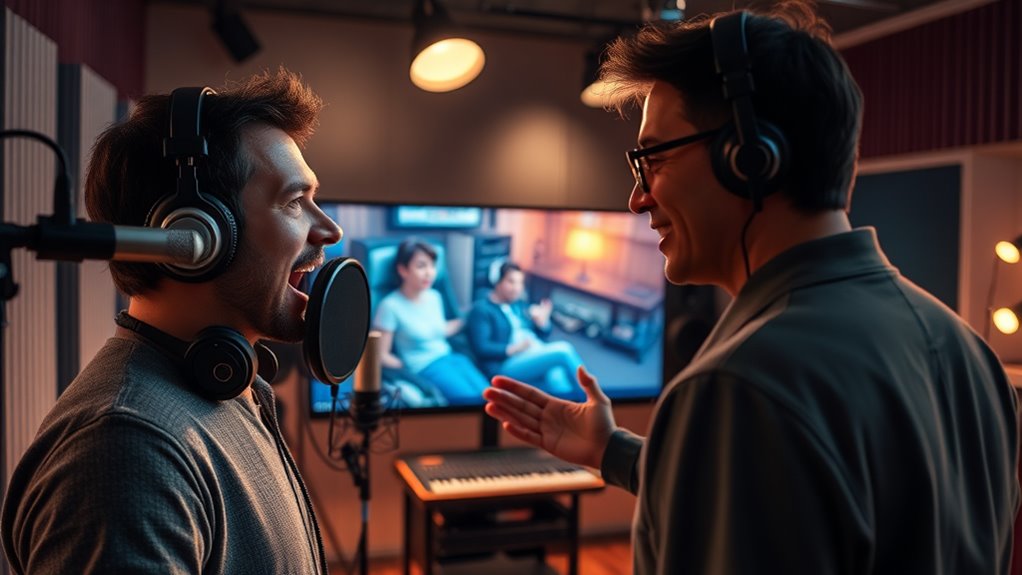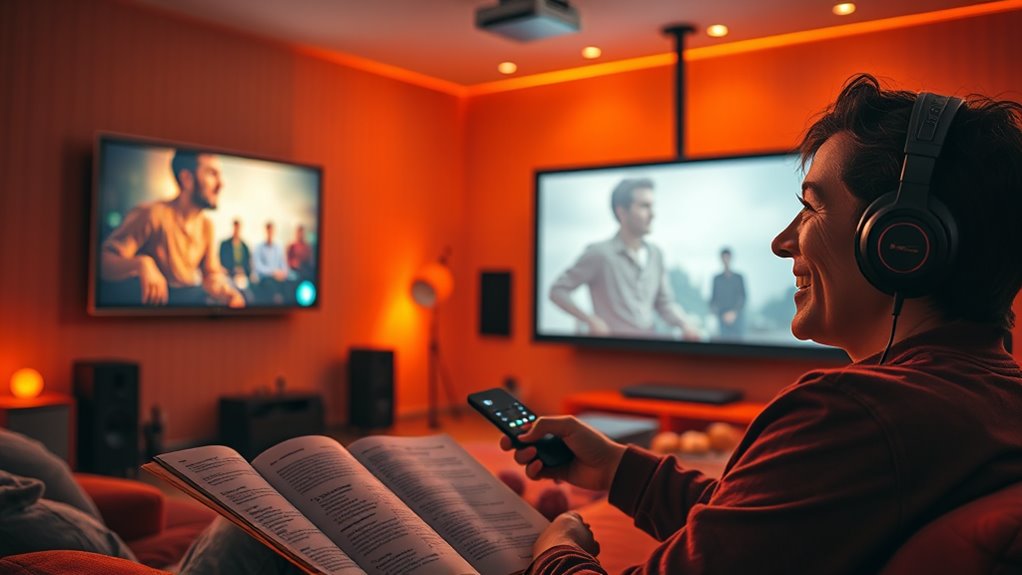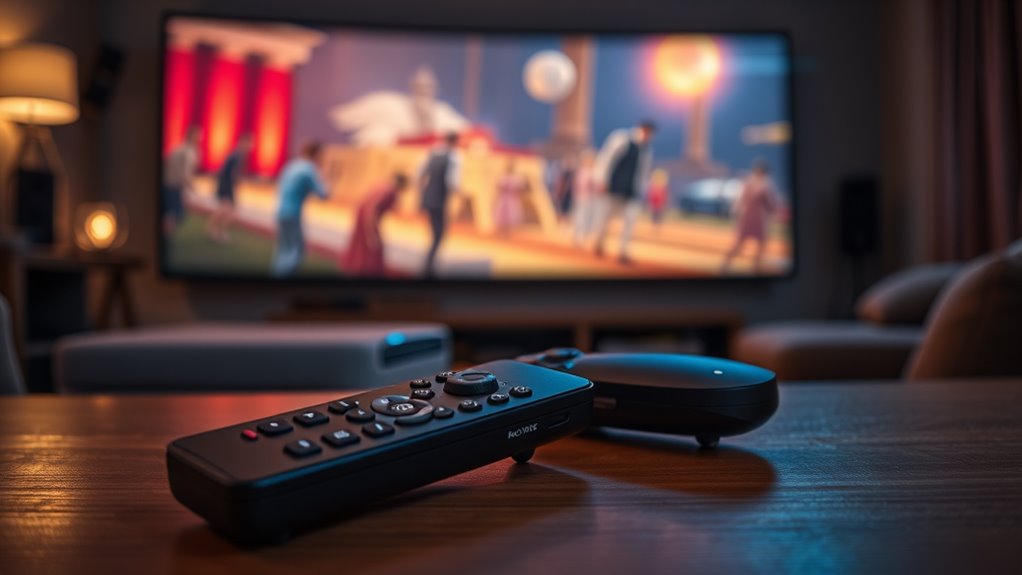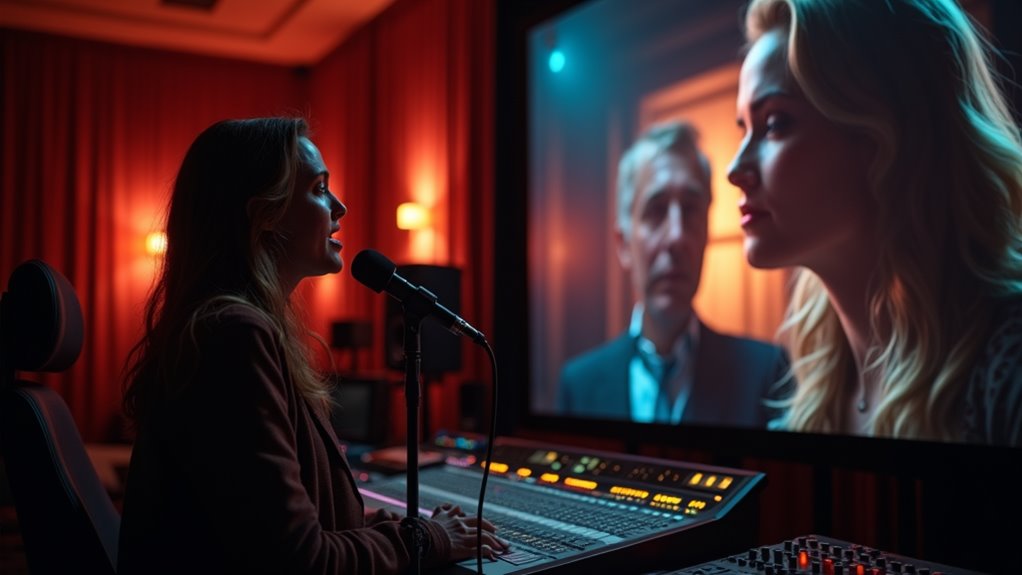Khi lựa chọn giữa lồng tiếng và thuyết minh cho một bộ phim, nhiều yếu tố cần được cân nhắc kỹ lưỡng.
Mỗi phương pháp mang lại trải nghiệm khác biệt cho khán giả và phù hợp với từng loại nội dung riêng biệt. Việc hiểu rõ ưu điểm và hạn chế của từng cách sẽ giúp người làm phim hoặc nhà phân phối đưa ra quyết định phù hợp nhất.
Vậy điều gì thực sự quan trọng khi chọn lựa phương thức truyền tải âm thanh cho phim?
Để hỗ trợ quá trình này, DichThuatVideo.com cung cấp dịch vụ Dịch thuật Phụ đề Video & Lồng tiếng Chuyên nghiệp ứng dụng trí tuệ nhân tạo AI.
DichThuatVideo.com mang đến giải pháp làm phụ đề và lồng tiếng thế hệ mới, kết hợp sức mạnh của AI và trí tuệ của chuyên gia nhằm tăng tốc độ xử lý và tối ưu chi phí.
Khách hàng có thể trải nghiệm dịch vụ dịch thuật video nhanh hơn, thông minh hơn và chất lượng cao hơn.
Thông tin liên hệ Zalo/SMS: 0981.243.678 | Website: dichthuatvideo.com
Những điểm chính
- Lồng tiếng tạo trải nghiệm xem phim liền mạch và nhập vai hơn với đối thoại đồng bộ.
- Thuyết minh giữ nguyên giọng gốc, giúp bảo tồn biểu cảm và âm thanh nền ban đầu.
- Trẻ em và khán giả không biết đọc phụ đề thường ưu tiên phim lồng tiếng.
- Phim tài liệu và nội dung cần giải thích văn hóa phù hợp với thuyết minh.
- Lựa chọn nên dựa trên loại phim, đối tượng khán giả và nhu cầu cá nhân về tính xác thực.
Tổng quan về lồng tiếng và thuyết minh

Although both lồng tiếng (dubbing) and thuyết minh (voice-over narration) serve to adapt foreign films for local audiences, they differ fundamentally in technique and viewer experience. Lồng tiếng involves replacing the original dialogue with voices spoken in the target language, synchronized with the actors’ lip movements. This method aims to create a seamless audiovisual experience, making it appear as if the characters are speaking the local language. In contrast, thuyết minh overlays a narrator’s voice that explains or translates dialogue and context without replacing the original audio track entirely. The original voices remain audible but are often lowered in volume to prioritize the narration. While lồng tiếng focuses on immersive storytelling through character voice substitution, thuyết minh provides additional commentary or translation, often maintaining the authenticity of the original performances. Both techniques have distinct applications depending on audience preferences, production goals, and cultural considerations in film localization. However, it is important to note that dịch thuật video and phụ đề are often integrated alongside these methods to enhance understanding and accessibility.
Ưu điểm của lồng tiếng trong xem phim
When films are dubbed, viewers benefit from a more immersive experience as the dialogue seamlessly matches the characters’ lip movements, enhancing realism. This synchronization helps maintain the narrative flow, allowing audiences to focus on visual and emotional cues without distraction. Dubbing also makes foreign films more accessible, eliminating the need for reading subtitles, which can interrupt the viewing experience. Additionally, professional voice actors can convey local cultural nuances and expressions, making the content resonate better with the target audience. This adaptation often improves emotional engagement by aligning vocal tone and delivery with viewers’ linguistic expectations. Moreover, dubbing supports inclusivity for children or individuals with reading difficulties, broadening the potential audience. In sum, dubbing offers a polished, culturally adapted, and easily digestible viewing experience that fosters deeper connection with the film’s story and characters, enhancing overall enjoyment.
Những lợi ích khi chọn thuyết minh

While dubbing offers a seamless integration of dialogue with on-screen characters, choosing narration presents distinct advantages that cater to different viewing preferences. Narration allows the original audio, including actors’ intonations and ambient sounds, to remain intact, preserving the film’s authentic atmosphere. This method enhances comprehension without overshadowing the original performance. Additionally, narration can provide contextual explanations, enriching the viewer’s understanding of cultural nuances or complex plot elements. It also requires less production time and cost compared to full dubbing, making it a practical choice for various media outlets.
Key benefits of narration include:
- Preservation of original actors’ vocal expression and background sounds
- Enhanced clarity through supplemental explanations
- Cost-effectiveness and faster production turnaround
- Flexibility in presenting films with minimal alteration to original audio
Choosing narration consequently offers a unique balance between accessibility and authenticity, appealing to audiences valuing original performance fidelity alongside clear understanding.
So sánh trải nghiệm người xem giữa hai phương thức
How do dubbing and narration differ in shaping the viewer’s experience? Dubbing replaces the original dialogue with voices in the viewer’s language, synchronizing with actors’ lip movements. This approach offers a seamless, immersive experience, allowing viewers to focus on visuals without reading subtitles or processing additional commentary. It tends to evoke stronger emotional engagement since voices match characters directly.
In contrast, narration overlays a single voice guiding the story, often explaining or summarizing scenes. This can enhance comprehension, especially for complex content, but may distance viewers from the characters’ emotions by interrupting natural dialogue flow. Narration also allows for additional context or cultural explanations, which dubbing cannot provide.
Thus, dubbing creates a more natural, immersive feel, while narration prioritizes clarity and educational support. The viewer’s experience varies accordingly, with dubbing fostering emotional connection and narration facilitating understanding. Both methods serve distinct purposes, shaping engagement differently.
Lựa chọn phù hợp dựa trên nhu cầu cá nhân và loại phim

What determines the best choice between dubbing and narration largely depends on individual preferences and the film genre. Each method offers distinct advantages tailored to different viewing contexts and audience needs. For animated films or those targeting children, dubbing often enhances engagement by synchronizing voices with character expressions. In contrast, documentaries or educational content benefit from narration, preserving the original audio’s authenticity while providing clear explanations. Personal factors such as hearing ability, language proficiency, and cultural preferences also influence the decision.
Key considerations include:
- Audience Age: Younger viewers may prefer dubbing for better comprehension.
- Film Type: Narration suits informative or artistic films emphasizing original sound.
- Language Skills: Viewers unfamiliar with the original language might favor dubbing.
- Cultural Context: Some audiences appreciate hearing the original voice for authenticity.
Selecting between dubbing and narration should therefore align with both the film’s nature and the viewer’s individual needs.
